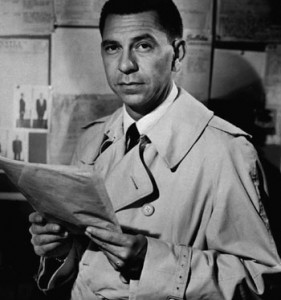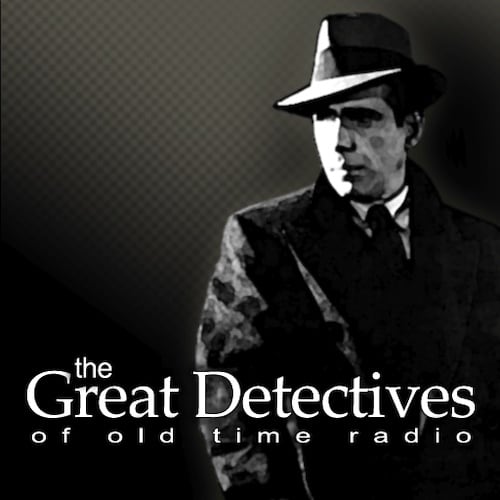Continued from Part Four
In the years after the golden age of radio, there would be many attempts to make new audio dramas, either by paying homage to the golden age of radio or trying to do something new. This started within a year of the Golden Age’s end.
Cataloging every group of actors that ever sat down to make audio dramas over the last sixty years would be an impossible task. So much of it was lost or forgotten or just didn’t have that much of an impact. I’m going to mention those that are prominent as well as others that I find interesting. If you’re aware of an audio drama or group worth discussing, feel free to leave it in the comments.
To start with, audio dramas got released on story records. Story records were a thing in America going back to the 1940s. In some cases, they contained a special recording of a radio drama. In other cases, they contained original audio dramas.. There was a Superman Christmas album in 1941 and two brief Superman records featuring the original radio cast in 1947.
These story records continued to be made long after the golden age of radio ended. Records were made in the 1960s, 1970s, and 1980s. Power Records in the 1970s may have been the most famous of these as they told stories of Superheroes, Star Trek, Space 1999, and Planet of the Apes among others. Most of these records attempted to tell complete stories in under 15 minutes, although some (particularly the Power Record LPs) could sustain a story for 45 minutes. Do these count as audio dramas? That’s a dicey question, particularly when you get into the “book and record” sets in which the audio would supplement a book rather than standing on its own.
I don’t have a definitive answer to that question. Millions of children listened to story records over those decades and may be what comes to mind when someone mentions “audio dramas.”
Pacifica Network Takes on Radio Dramas
My initial instinct when doing this section was talk about all the 1960s radio dramas in chronological order. However, Pacifica network radio stations not only offered the first two dramas discussed, but also two others, so it seemed good to talk about them first before moving on to other projects.
The Pacifica Network is made up of listener-supported independently non-commercial radio stations. The flagship station was KPFA in Berkley, and by the 1960s, they’d been joined by KPFK in Los Angeles, and WBAI in New York City.
In October 1963, a series of movie parodies that had long been privately performed made their way onto the public airways over KPFA. The series ran for five weeks with four episodes running 45 minutes in length and the other running an hour and a half. This is the first new radio drama made in the United States after the end of the golden age of radio.
The second was the Starlight Mystery Theatre which featured Matthew Slade, Private Investigator, which began over KPFK radio in Los Angeles. The series was the brainchild of former Canadian News Publications owner Brian Adams, who wrote for the series and was its producer/director. The series was a remake of Matthew Slade, a Canadian radio series from 1957-60. In a July 1964 interview with the Canadian newspaper The Province, he said he hoped to make the new productions available on Canadian radio. He also planned six Matthew Slade movies, although nothing appears to have come of that.
KPFK had been at the center at a lot of political controversies and even had had to answer some questions from the FCC. LA Times Radio columnist Don Page pitched The Starlight Mystery Theatre (and the Los Angeles re-broadcast of The Compendium Cliche series) as a break from the seriousness and controversy.
Slade was played William Wintersole, an experienced stage actor who had just come to Hollywood and whose debut screen acting performance wouldn’t air until November. Wintersole would become a solid presence in Hollywood, logging eighty-seven different acting entries in his IMDB profile including a twenty-five year run on the soap The Young and the Restless. Slade’s policeman foil Lieutenant Barney Flagg was played by Karl Swenson, a veteran character on screen and radio. Swenson had starred as the lead actor in the Golden Age Father Brown and Mister Chameleon and he became the first actor from the Golden Age of Radio to take part in a radio revival effort.
The Matthew Slade series was a bit tongue-in-cheek. However, it shouldn’t be confused with the type of parody of radio detective programs that have continued to be released to this day. It was tongue in cheek in the same that Richard Diamond could be. The series began airing July 5, 1964 and continued on a mostly every other week schedule until November 22nd and then re-aired four episodes in 1965. The series was resyndicated in 1966 by the Armed Forces Radio and Television Service and in 1968 over the Far East Network to American Service personnel. The only episodes missing are the Avarice Heir and the third party of the “Day of the Phoenix” trilogy. (Note: Still our most sought-after lost episode.)
The audio drama event that had the greatest impact was the arrival. of Firesign Radio Theatre, a comedy troupe that began performing on the Radio Free Oz program over KPFK. The four men who started the troupe chose the name because they were all born under the three astrological “fire signs.” They premiered in 1966 and were a definite part of the Counter-culture movement, but also managed to outlast it. Their humor had many features: it was surreal, it pushed the envelop, and was also very political. They had several radio programs in succession beginning with Radio Free Oz followed by The Firestone Theatre Hour, Dear Friends, and Let’s Eat. The last of these series ended in 1972. They also continued to publish comedy albums with original radio plays, the most famous of which were the Nick Danger series parodying golden age of radio detectives. The group had a very productive career: releasing albums, writing books, and dipping their toe back into radio every now and again. Group member Dave Ossman established the Mark Time Awards to award excellence in audio drama.
Like any performing group of the era, they had mandatory drama and group break-ups but got back together. The group carried on long enough to even have a podcast called the Radio Free Oz Podcast. (What else?) Founder Peter Bergmann died in 2012 and his memorial service was their last group performance.
Pacifica’s final contribution came from its New York, WBAI in New York City which produced the first radio drama based on a Marvel Superhero prorperty. Charlie Potter had been hired on at the station to do light admin work but discovered it was relatively easy to get on the air and had been missing radio drama. He decided to produce a series about Doctor Strange, Marvel’s Master of the Mystic Arts. Theyc called Stan Lee and asked his permission to do the series. Lee, whose office was near the WBAI studio, walked over and gave his blessing in person and wished him well on the radio series.
The series ran for 17 episodes, which were produced over three years. At the start of the 2010, six or (some sites said seven) episodes of this series came into circulation and were passed around by collectors. Most of these have disappeared (into some weird pocket dimension no doubt), but the origin episode is still online and it’s a supririsngly impressive production particularly in terms of sound design and direction.
Theatre Five
After Matthew Slade began airing on the West Coast, something far bigger came to the nationwide ABC radio network, Theatre Five began airing August 8, 1964. It was an anthology program that ran for 260 episodes. It was the first attempt of a major network to bring back radio drama.
It featured some key features that later efforts would implement. Notably, it was a five-night-a-week program. This was critical. While during the Golden Age of Radio, a program could be once a week on any given night, the way network radio had evolved, weeknights had a reliable schedule every night. If you wanted to have a program on one weeknight, you needed to cover them all. Theatre Five actually filled two separate twenty-five minute timeslots as a network sustained program.
The series was based in New York and brought back many of the most noted New York voices of the Golden Age of Radio York including Jackson Beck, George Petrie, Lon Clark, Ed Begley, Staats Cotsworth, Ralph Bell, and Santos Ortega. It also featured a couple of future stars making one-off appearances in Alan Alda and James Earl Jones. The stories ranged across a wide variety of genres from Science Fiction to Mysteries and Human Interest. The stories were written in a very contemporary style, often following modern trends in social thinking and theories. The theme music was similarly modern,with a very memorable quintessentially 1960s feel to it.
The series ended after a year. The programs were translated into Spanish. In addition, ABC gave copies of the series to non-profit radio station WBUR to re-air for educational purposes.
Horizon’s West
Horizon’s West was a thirteen-episode docudrama of the Lewis and Clark expedition. It was actually produced by the Armed Forces Radio and Television Service which was better known for distribution radio drama. The series starred golden age radio regular Harry Bartel as Merriweather Lewis and also featured golden age radio actors like Ben Wright, Jay Novello, and Les Tremayne. It was broadcast to American service personnel.
While radio drama continued to be produced during the 1960s, but most were rather obscure. The 1970s would bring memorable efforts to revive radio drama as the attempts to revive it in the United States would begin in earnest.

